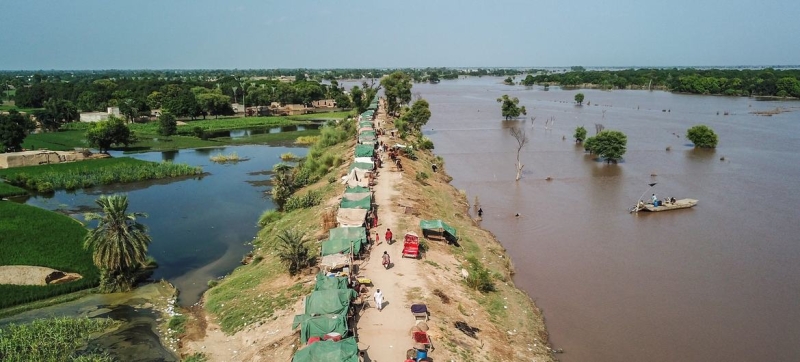
Consequences of floods in Pakistan. Photo from the archive. Over three decades, natural disasters caused $3.26 trillion in damage to agriculture. Climate and Environment
Over the past 33 years, natural disasters have caused $3.26 trillion in damage to global agriculture (99 billion annually), representing about four percent of global agricultural GDP. This is stated in the new report of the UN Food and Agriculture Organization (FAO) “The Impact of Disasters on Agriculture and Food Security.”
The paper represents the largest global study to date of the impacts of natural disasters, from droughts and floods to pest outbreaks and marine heat waves. The report also shows how digital technologies are helping to move from crisis response to crisis prevention.
Losses and regional imbalances
From 1991 to 2023, 4.6 billion tons of cereals, 2.8 billion tons of fruits and vegetables were lost to natural disasters, and 900 million tons of meat and dairy products. This is equivalent to reducing a person’s daily diet by 320 kilocalories, which is 13 to 16 percent of average energy needs.
The largest absolute loss occurred in Asia, at $1.53 trillion (47 percent of global losses), reflecting both the scale of production and the region’s high vulnerability to floods, storms, and droughts. temperatures.
Africa suffered losses of 611 billion, but it was here that the damage was most significant in relative terms – 7.4 percent of agricultural GDP.
Small island states remain especially vulnerable, where losses account for a disproportionately high share of agricultural GDP. Marine heatwaves have caused $6.6 billion in losses, affecting 15 percent of the world’s fisheries, but losses in aquaculture remain underestimated – despite the industry supporting the livelihoods of 500 million people.
Digital revolution in agriculture
FAO emphasizes that digital technologies are becoming a key tool for risk reduction. Artificial intelligence, remote sensing, mobile communications, drones and sensors provide localized data in real time, improving early warning, insurance and preventive measures. Successful solutions include the SoilFER platform for sustainable agriculture, the FAMEWS system for tracking caterpillar infestations, and the Climate Risk Toolbox. used in more than 200 projects. More than nine million farmers are already using digital platforms, and early warnings allow up to 90 percent of the population in at-risk areas to evacuate.
Digitalization must be inclusive
Despite remarkable progress, more than 2.6 billion people in the world remain outside the digital space – mainly in rural areas, the most prone to disasters. FAO emphasizes that technology must be people-centred and accompanied by skills development, institutional support and policy reforms.
The organization calls on governments, international partners and the private sector to invest massively in digital infrastructure, integrate innovation into national policies and ensure greater access to digital technologies for smallholder farmers, women, youth and indigenous peoples.
